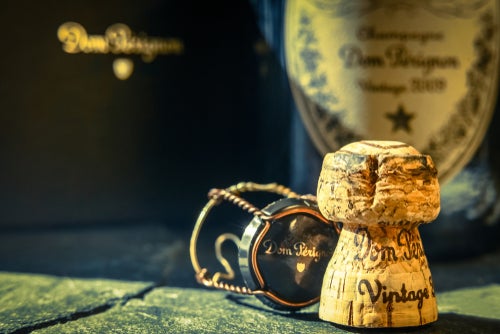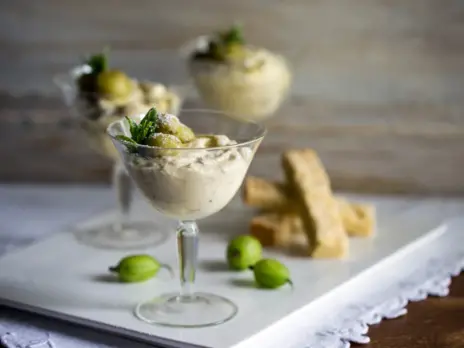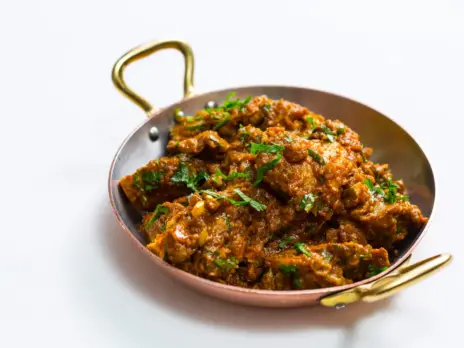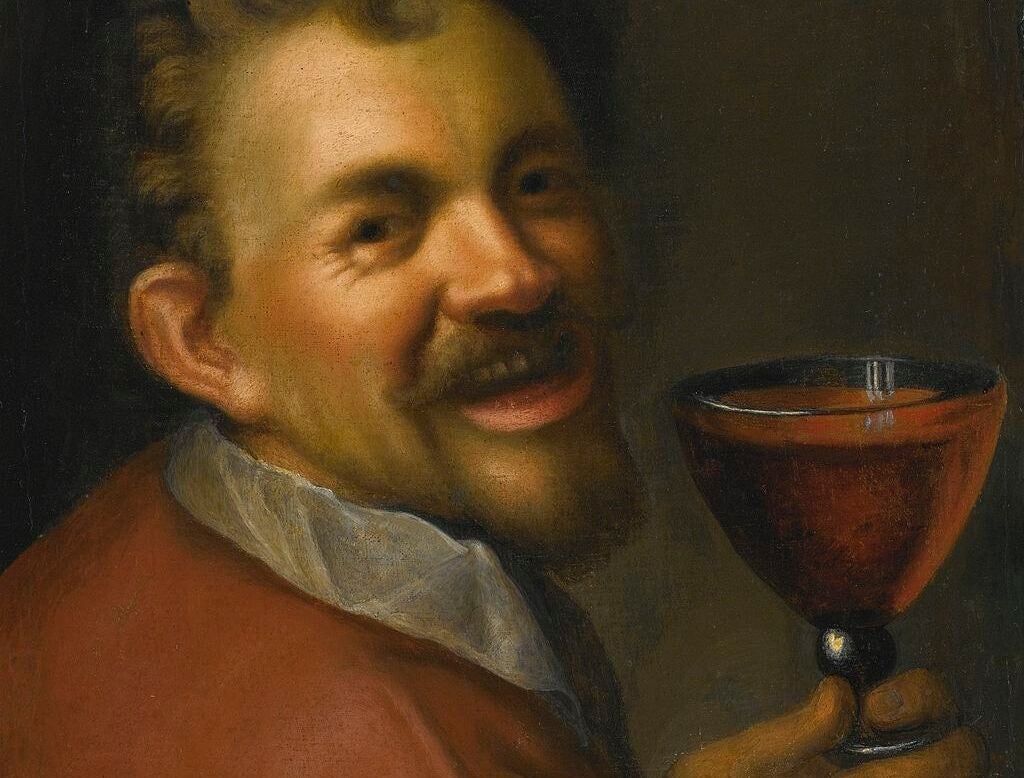
Stuart Walton traces the evolving meanings of self-portraits with wine, from the Late Renaissance to the beginning of the 20th century.
No cat that got the cream could ever have looked so gluttonously self-satisfied. The man in the wine-red tunic looks back at us over his shoulder with an uninhibited guffaw, a slight flush on his cheeks, his dewy skin vivid in the candlelight, an outsized goblet clutched rather delicately in his left hand. Its contents provide a chromatic rhyme with the color of his jacket, and there is more than a touch of elegance to him, for all that we meet him in his cups. It takes a certain bravado to sport a kiss curl in your early forties, but that’s what wine will do for you. Make you happy enough not to care.
Hans von Aachen’s Self-Portrait with a Glass of Wine (c.1596) belongs squarely in the Late Renaissance humanist tradition, in which wine is still a gift—of nature, if not of the gods. There is a salve for troubled souls in every glass, so much so that one need hardly depict the vanishing trouble. It has been sluiced away by the garnet nectar in von Aachen’s cup, a sacrament in both the liturgical and secular senses, poured out for the salvation of souls, knocked back for the ablution of care.
Festive self-portraits with wine
Self-portraits with wine would go on being as festive as von Aachen’s for another three centuries or so, throughout the religious wars, and the geopolitical conflicts of the 18th century. In the 1730s, towards the end of his life, the French portraitist Alexis Grimou, whose affinity for the Netherlandish style earned him the reputation of a Gallic Rembrandt, depicts himself bathed in warm light at a bare wood table. His smile is a little more reserved, a little more demure, than von Aachen’s, but the nunc est bibendum moment is just as unmistakable.
In a work that came to be known as The Toper, now in the National Galleries of Scotland, Edinburgh, Grimou raises a more modern-looking wineglass in his left hand in a convivial toast to the viewer, as though inviting us to join him, although the tilt of the decanter in the right hand away from us seems to be saying, “Mitts off.” God bless the child who’s got his own. There is a hunk of broken bread and a chunk of fat-speckled saucisse in front of him, so this isn’t purely a drinking session—the elements of the Eucharist are unmistakable—but the dishevelled ruffled collar and the conspiratorial smirk suggests he has been at it for a while.
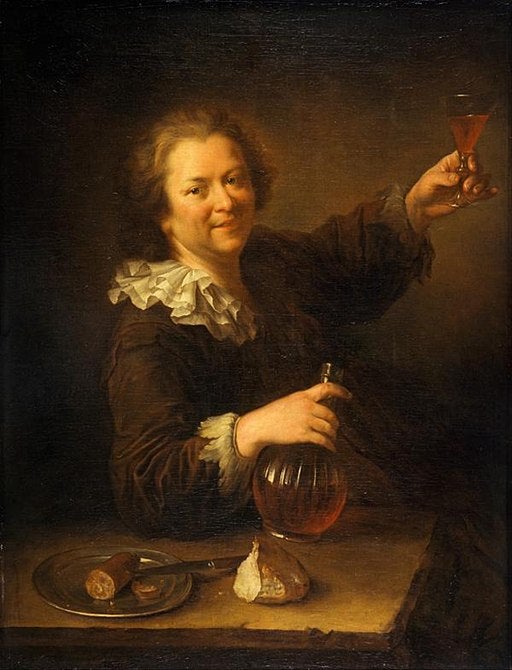
Now look at the expression on the face of the Swiss painter Arnold Böcklin, in the 1885 Self-Portrait with Wineglass in the Alte Nationalgalerie, Berlin. A well-fed bourgeois gentleman in evening dress looks out at the viewer in a self-consciously stiff posture and with an inscrutable neutral expression, right hand holding an elegant small glass of what might be port, the left hand posed pretentiously on the hip. He could be a theatrical impresario toasting the success of a new production in the moments before curtain up. Drinking has become something altogether more sober here than in the earlier works, no longer an agent of comfort and laughter.
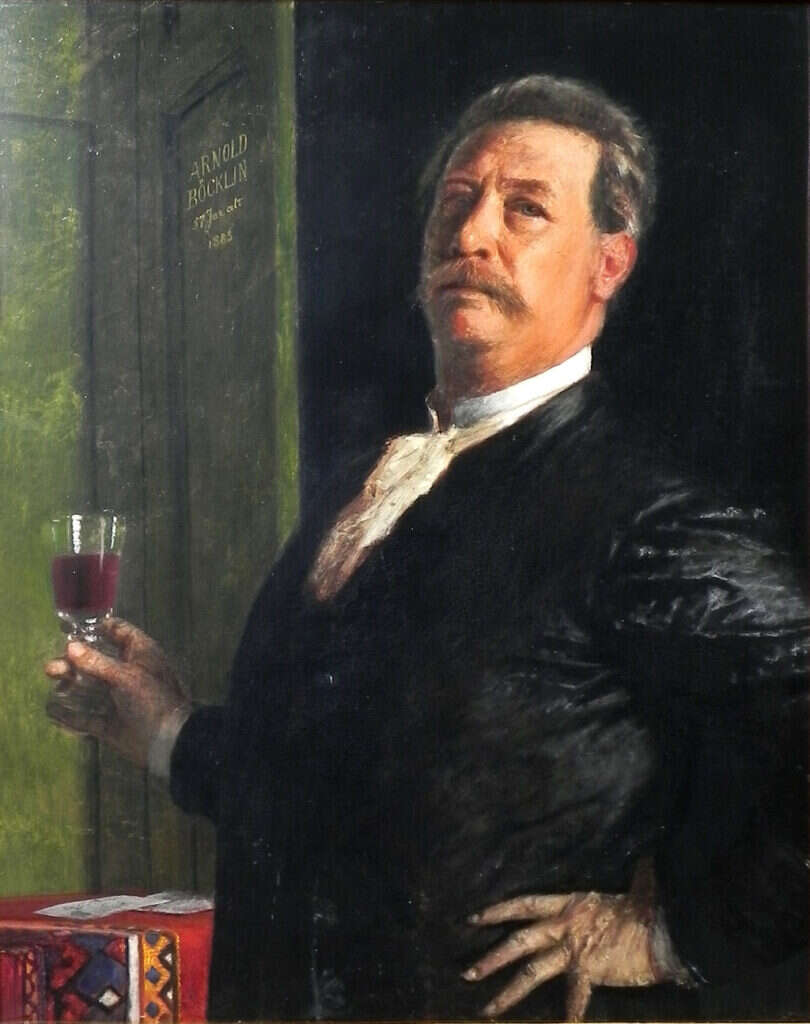
Roll on a little further, into the looming disaster of the 20th century, and note how Böcklin’s composed features have thickened into the grim frown of Edvard Munch in the 1906 Self-Portrait with a Bottle of Wine in Oslo. Although the artist is sitting in a public space amid white-clothed tables, he has only one other solitary customer and a pair of waiters in mirror symmetry for company. The glum piety of the pose, hands crossed passively in his lap, suggests anything but festive relaxation, more a state of dejection emphasized by the slight crouch of the head from the dropped shoulders. This is a man hell-bent on getting through a bottle of what looks like Rhine wine (the picture was painted in Weimar), in an act of drinking that has become not one glass at a time, but instead dipsomania’s bleak teleology.
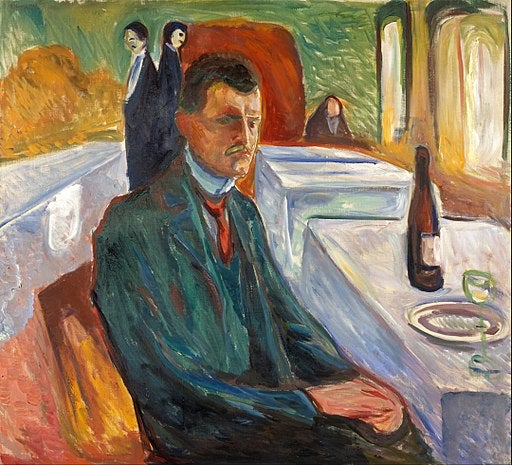
Only a few years later, as the historical shadows lengthen towards the catastrophe of 1914, Ernst Ludwig Kirchner’s The Drinker (Self-Portrait), in the Germanisches Nationalmuseum, Nuremberg, marks a further ghastly deterioration. Things have really got to this guy. The bilious green complexion, drooping eyelids and focusless gaze say it all. There isn’t enough wine in the world to soothe away misery like this, despite the enormous green goblet next to him. His left arm looks to be drunkenly tipping the table towards us. A moment later will come the smash and the spill, and an unceremonious ejection.

What went wrong?
What happened is that 19th-century medical science discovered the social type of the inebriate, a member of the politesse who had developed a habitual resort to drink, and who needed the help of doctors and the sanatorium system to aid his recovery. Böcklin, Munch, and Kirchner were all what we would now classify as alcoholics.



